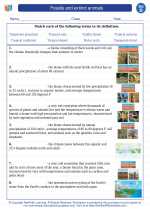Bacteria: The Tiny Organisms
Bacteria are single-celled microorganisms that can be found almost everywhere on Earth. They are incredibly small, with most bacteria being only a few micrometers in size. Despite their small size, bacteria play a crucial role in various ecosystems and have significant impacts on human life.
Characteristics of Bacteria
- Prokaryotic Cells: Bacteria are made up of prokaryotic cells, which means they lack a true nucleus and other membrane-bound organelles.
- Diverse Shapes and Sizes: Bacteria come in a variety of shapes, including cocci (spherical), bacilli (rod-shaped), and spirilla (spiral-shaped).
- Reproduction: Bacteria reproduce through a process called binary fission, where a single bacterium divides into two identical daughter cells.
- Mobility: Some bacteria have flagella or pili that enable them to move around.
Role of Bacteria
Bacteria have both beneficial and harmful effects on the environment and human health.
Beneficial Effects:
- Decomposition: Bacteria play a vital role in breaking down organic matter, recycling nutrients, and contributing to the nutrient cycle.
- Food Production: Certain bacteria are used in the production of foods like yogurt, cheese, and pickles through processes such as fermentation.
- Symbiotic Relationships: Some bacteria form symbiotic relationships with plants, aiding in nitrogen fixation and promoting plant growth.
Harmful Effects:
- Disease-causing: Pathogenic bacteria can cause illnesses such as strep throat, tuberculosis, and food poisoning.
- Food Spoilage: Certain bacteria can spoil food by breaking it down and producing harmful byproducts.
- Antibiotic Resistance: Overuse of antibiotics has led to the emergence of antibiotic-resistant strains of bacteria, posing a significant health threat.
Studying Bacteria
When studying bacteria, scientists use various techniques to observe, culture, and identify different bacterial species. Some common methods include:
- Microscopy: Bacteria can be observed under a light microscope or electron microscope to study their morphology and structure.
- Culture Techniques: Bacteria can be grown in laboratory conditions on agar plates to study their growth patterns and characteristics.
- Molecular Techniques: DNA analysis and sequencing are used to identify and classify bacterial species based on their genetic makeup.
- Microbiome Studies: Researchers study the complex communities of bacteria that exist in various environments, including the human body, soil, and water.
Understanding the role and characteristics of bacteria is essential in fields such as microbiology, ecology, and medicine. By studying bacteria, scientists can develop new insights into disease prevention, environmental sustainability, and biotechnological applications.
Now that you have a good understanding of bacteria, it's time to test your knowledge. Take the quiz below to see how much you've learned!
[Bacteria] Related Worksheets and Study Guides:
.◂Science Worksheets and Study Guides Fourth Grade. Fossils and extinct animals

 Worksheet/Answer key
Worksheet/Answer key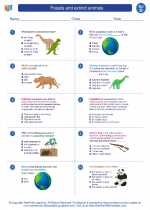
 Worksheet/Answer key
Worksheet/Answer key
 Worksheet/Answer key
Worksheet/Answer key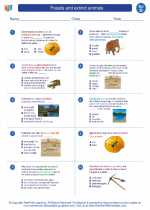
 Vocabulary/Answer key
Vocabulary/Answer key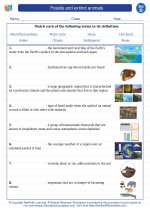
 Vocabulary/Answer key
Vocabulary/Answer key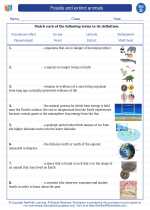
 Vocabulary/Answer key
Vocabulary/Answer key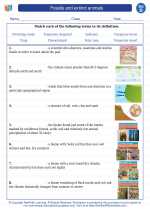
 Vocabulary/Answer key
Vocabulary/Answer key